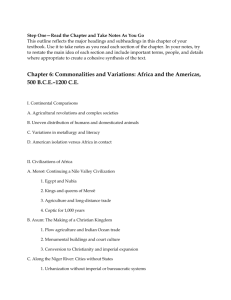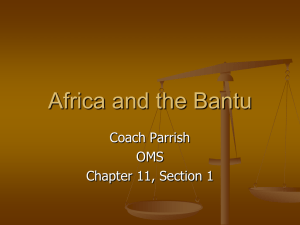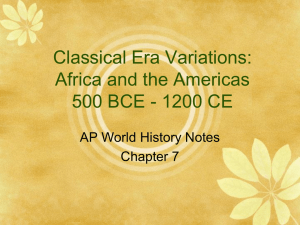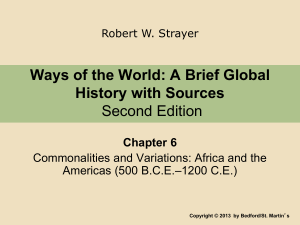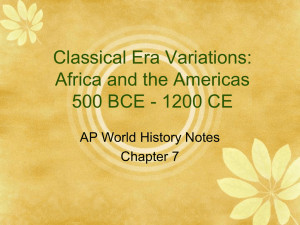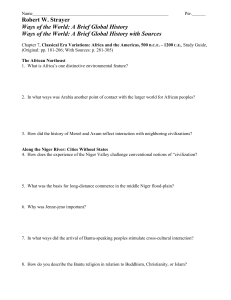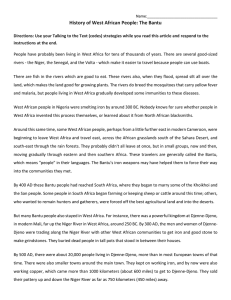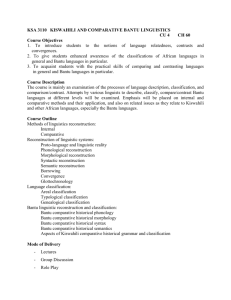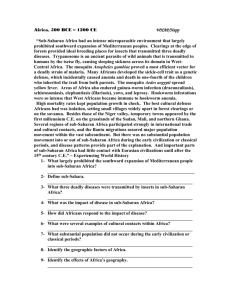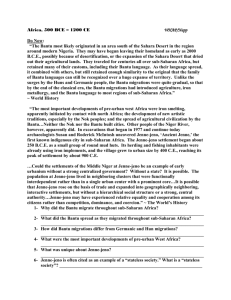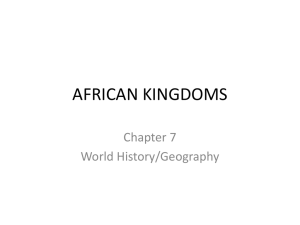File - Mr. Neadel`s AP World History
advertisement
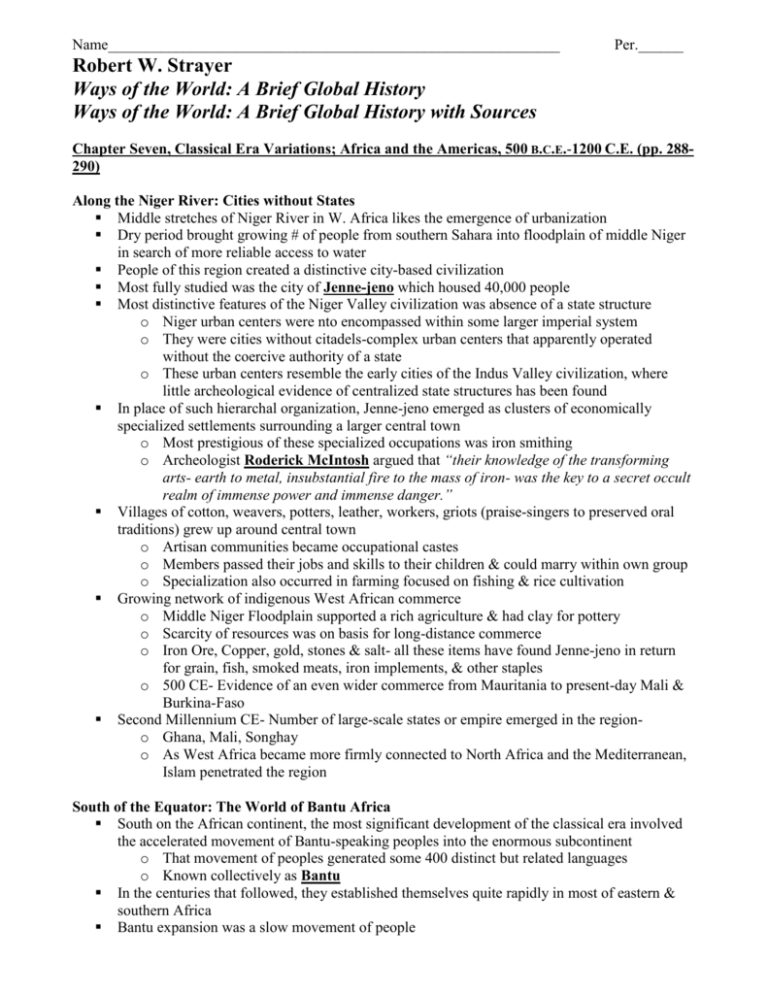
Name____________________________________________________________ Per.______ Robert W. Strayer Ways of the World: A Brief Global History Ways of the World: A Brief Global History with Sources Chapter Seven, Classical Era Variations; Africa and the Americas, 500 B.C.E.-1200 C.E. (pp. 288290) Along the Niger River: Cities without States Middle stretches of Niger River in W. Africa likes the emergence of urbanization Dry period brought growing # of people from southern Sahara into floodplain of middle Niger in search of more reliable access to water People of this region created a distinctive city-based civilization Most fully studied was the city of Jenne-jeno which housed 40,000 people Most distinctive features of the Niger Valley civilization was absence of a state structure o Niger urban centers were nto encompassed within some larger imperial system o They were cities without citadels-complex urban centers that apparently operated without the coercive authority of a state o These urban centers resemble the early cities of the Indus Valley civilization, where little archeological evidence of centralized state structures has been found In place of such hierarchal organization, Jenne-jeno emerged as clusters of economically specialized settlements surrounding a larger central town o Most prestigious of these specialized occupations was iron smithing o Archeologist Roderick McIntosh argued that “their knowledge of the transforming arts- earth to metal, insubstantial fire to the mass of iron- was the key to a secret occult realm of immense power and immense danger.” Villages of cotton, weavers, potters, leather, workers, griots (praise-singers to preserved oral traditions) grew up around central town o Artisan communities became occupational castes o Members passed their jobs and skills to their children & could marry within own group o Specialization also occurred in farming focused on fishing & rice cultivation Growing network of indigenous West African commerce o Middle Niger Floodplain supported a rich agriculture & had clay for pottery o Scarcity of resources was on basis for long-distance commerce o Iron Ore, Copper, gold, stones & salt- all these items have found Jenne-jeno in return for grain, fish, smoked meats, iron implements, & other staples o 500 CE- Evidence of an even wider commerce from Mauritania to present-day Mali & Burkina-Faso Second Millennium CE- Number of large-scale states or empire emerged in the regiono Ghana, Mali, Songhay o As West Africa became more firmly connected to North Africa and the Mediterranean, Islam penetrated the region South of the Equator: The World of Bantu Africa South on the African continent, the most significant development of the classical era involved the accelerated movement of Bantu-speaking peoples into the enormous subcontinent o That movement of peoples generated some 400 distinct but related languages o Known collectively as Bantu In the centuries that followed, they established themselves quite rapidly in most of eastern & southern Africa Bantu expansion was a slow movement of people Cultural Encounters Movement of peoples also generated numerous cross-cultural encounters, as the Bantuspeaking newcomers interacted with already-established societies o None more significant than the agricultural Bantu & gathering/hunting peoples who occupied Africa south of the Equator Bantu-speaking farmers had various advantages o 1) Agriculture generated a more productive economy o 2) Disease-Farmers brought parasitic & infectious diseases such as Malaria o 3) Iron- Useful for tools & weapons Gathering & hunting peoples were displaced, absorbed, or eliminated Many of the Bantu languages of southern Africa retain to this day the distinctive “clicks” In the rainforest region of Central Africa, the foraging Batwa (Pygmy) people became forest specialists o Produced honey, wild game, elephant products, animal skins, medicinal barks & plants which entered regional trading networks in exchange for the agricultural products of their Bantu neighbors Bantu farmers regarded their Batwa neighbors as closest to their ancestral & territorial spirits Bantu cultures changed as they encountered different peoples o In drier environment of East Africa, African Bantu homeland was unable to support their growing numbers o Bantu farmers increasingly adopted grains as well as domesticated sheep & cattle All of this became part of the common culture of Bantu-speaking Africa Society and Religion Bantu-speaking peoples also created a wide variety of quite distinct societies and cultures o In present day Kenya organized themselves without any formal political specialists o Instead, they made decisions by using kinship structures or lineage principles The kind of society that developed in any particular area depended on local factors o Included: population, density, trading opportunities, & interaction among culturally different peoples In terms of religion, Bantu practice in general placed less emphasis on a High or creator God o Religion focused on ancestral or nature spirits o Power of dead ancestors might be accessed through rituals of sacrifice (cattle) o Supernatural power deriving from ancestors, heroes, or nature spirits o Belief in witches reflected the idea that evil or misfortune was work of malicious people Bantu religious practice was predicated on the notion of “continuous revelation” o Possibility of constantly receiving new messages from the world beyond
